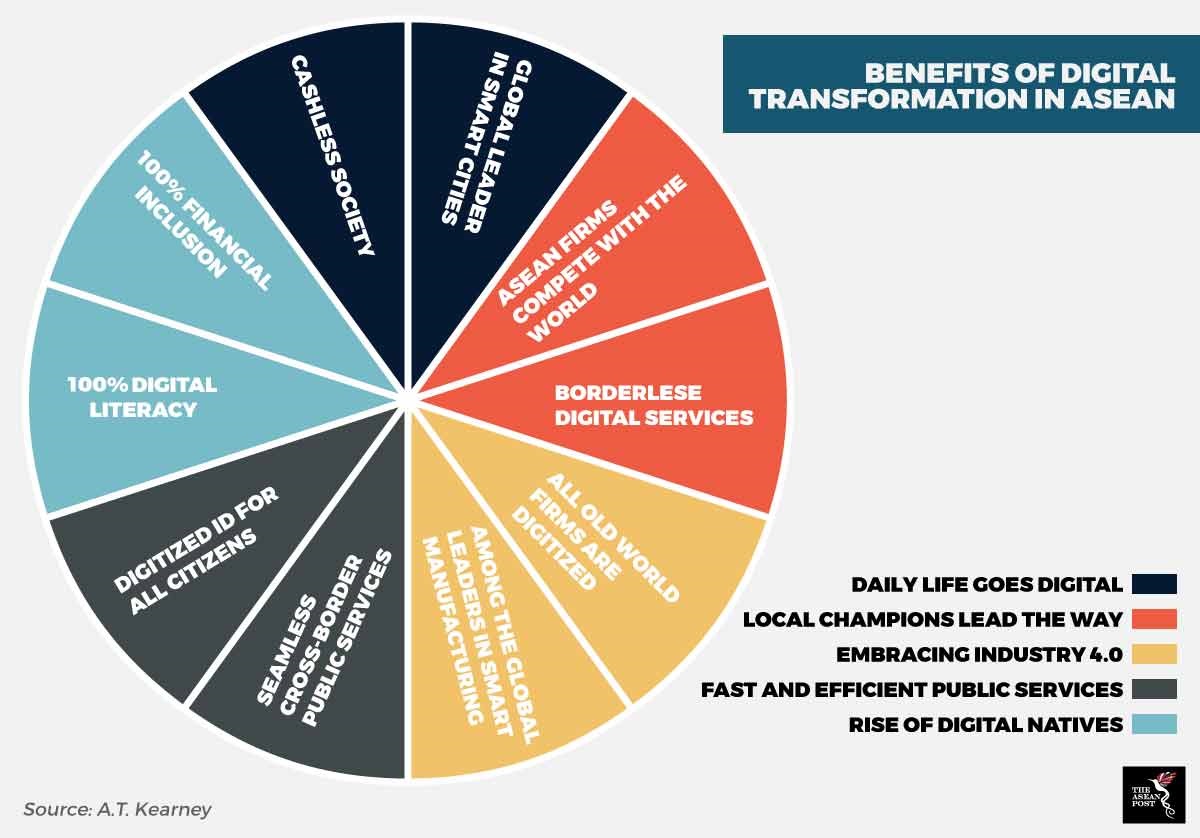Southeast Asia is home to more than 630 million people and is the world’s third largest region. As it is the fastest growing internet population in the world - with more than 3.8 million new users every month – the internet economy here is expected to reach US$200 billion with a total of US$1 trillion added to its GDP by 2025, according to A.T. Kearney’s 2017 report titled ‘ASEAN in the Digital Age: Quo Vadis’.
The report also states that digital developments in the region are accelerating in four key areas namely, (i) connectivity & computing power, (ii) data, analytics & intelligence, (iii) human-machine interface and (iv) physical-digital collision. This evolution is expected to create substantial opportunity for the region to jump to the forefront of the technology wave.
Through this current digital evolution, the Association of Southeast Asian Nations (ASEAN) will see a healthy prospect of spurring innovation and maximising productivity, which in turn will allow the regional bloc to reach a higher economic state.
The Opportunities and Policy Challenges of Digitalisation in Southeast Asia 2017 report by the Organisation for Economic Co-operation and Development (OECD) states that “…for the ASEAN region, the digital transformation can be part of the response to the slowdown in productivity growth that has occurred across much of the region, helping to ensure higher incomes and stronger competitiveness in global markets.”

What can the digital revolution do for ASEAN?
The opportunities for ASEAN as a result of the digital revolution are many. The A.T. Kearney report affirms that ASEAN will move into a ‘cashless’ era whereby financial technologies and e-commerce will take over traditional retail and trading practices. There will also be further opportunities for the 10-member states to become global leaders in smart city implementation.
Through borderless digital services and the accessibility to a great deal of information online, the report also states that ASEAN will be able to conduct seamless cross-border partnerships with countries from different parts of the world.
Other benefits of this digital development phenomena include a rise in the number of digital natives, with ASEAN expected to achieve 100% digital literacy. This means everyone in the region, young or old will live their daily lives with advanced technologies assisting them directly or quietly working in the background to ensure a better quality of life. Apart from that, work environments too will also be enhanced thanks to the latest technologies.
For example, artificial intelligence will be able to aid the human labour force by incorporating big data analytics into their operations. Governments, large corporations and even individuals will be able to access unprecedented volumes of data that help inform real-time decision making. This will not only save time but also cost in the long-run.
Is ASEAN ready?
In the 2017 CIMB ASEAN Research Institute (CARI) report titled ‘Advancing ASEAN in a Digital Age, Indonesia’s Minister of Finance, Sri Mulyani Indrawati said, “…this new global megatrend of the digital age is a good momentum for ASEAN to strengthen economic performance as well as people’s prosperity within the region. People in ASEAN can also benefit from jobs created by young tech-savvy millennials.”
However, there are three key challenges that ASEAN must overcome first in order to reach its full digital potential. The A.T. Kearney report highlights the region’s weak rural infrastructure development, limited workforce readiness for the digital age as well as privacy and security concerns that need to be addressed.
Sri Mulyani also reasserts that ASEAN must “…be well prepared in fulfilling the requirements needed for the digital era. These include relevant government policies in facilitating the emergence of the digital economy as one of the main sources of the region’s growth.
What must ASEAN do to overcome these challenges? “Policy makers must work to ensure that the opportunity offered by the digital transformation is used to improve the well-being of all citizens,” the OECD report states. Be it through developing infrastructure to ensure that society remains connected, or training the current workforce to adapt to digitalisation in the workplace, ASEAN needs to recognise these challenges and work collectively to learn from each other. At the same time, policies need to be put in place to help all workers and society as a whole to adjust to this transition.
Recommended stories:
Battle of Marawi: Three months on
